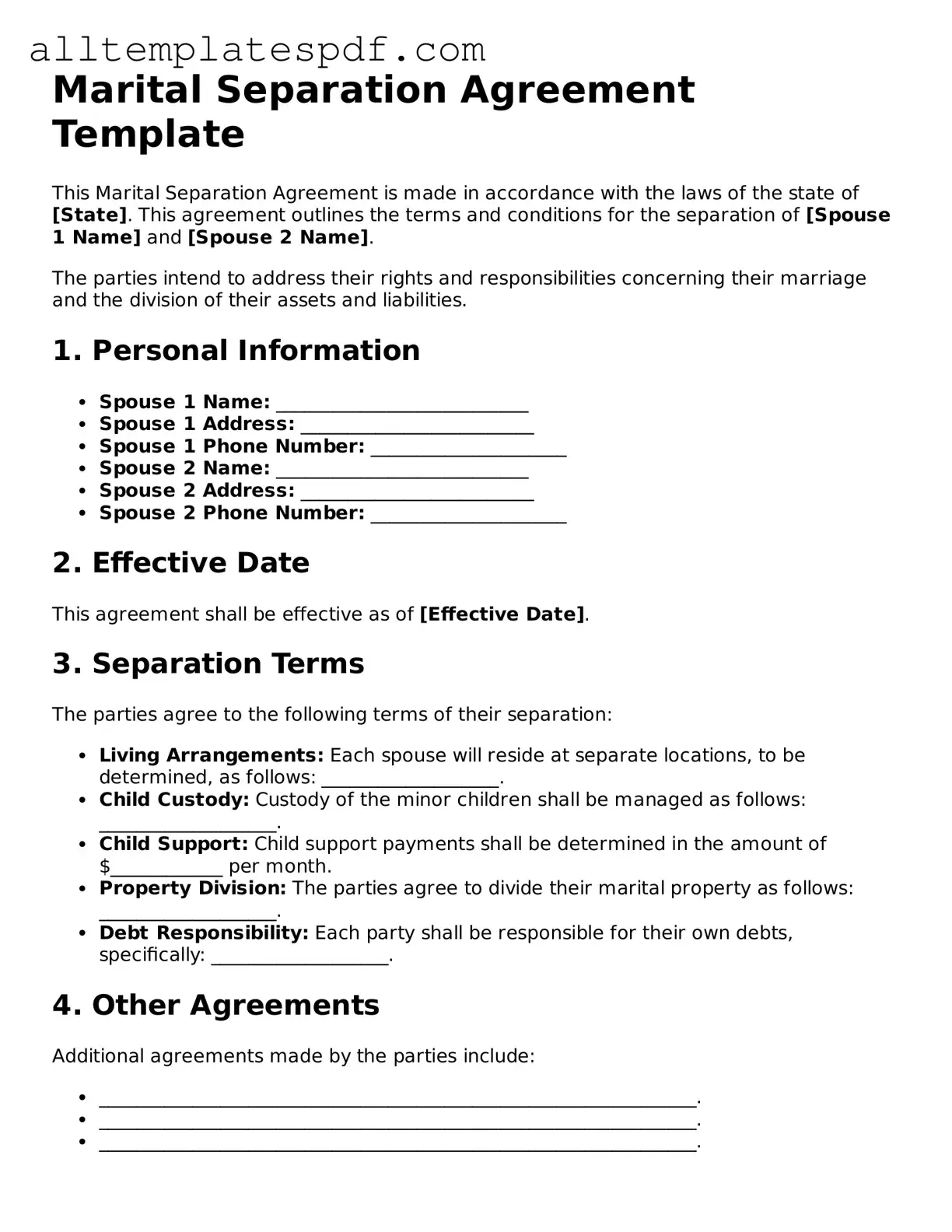Attorney-Approved Marital Separation Agreement Template
A Marital Separation Agreement is a legal document that outlines the terms of a couple's separation, addressing issues such as property division, child custody, and support obligations. This agreement serves to protect the rights of both parties while providing clarity during a challenging time. To begin the process, fill out the form by clicking the button below.
Open Editor
